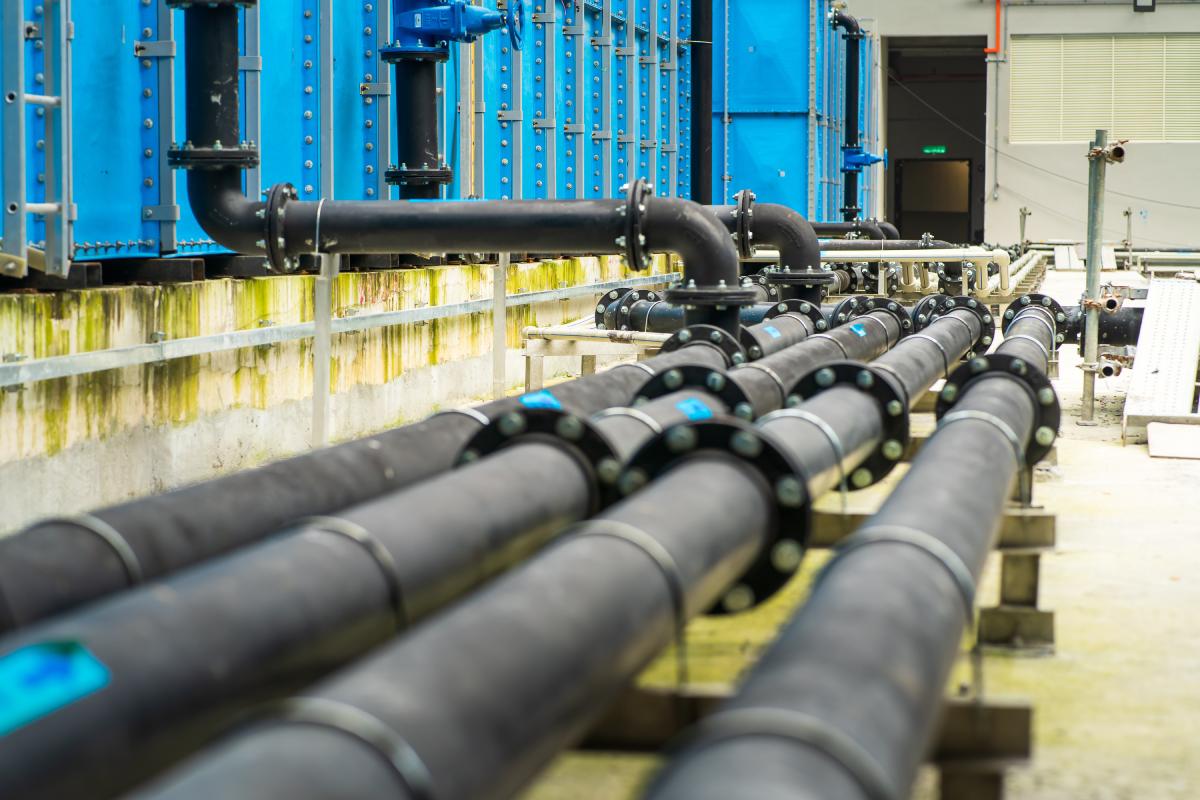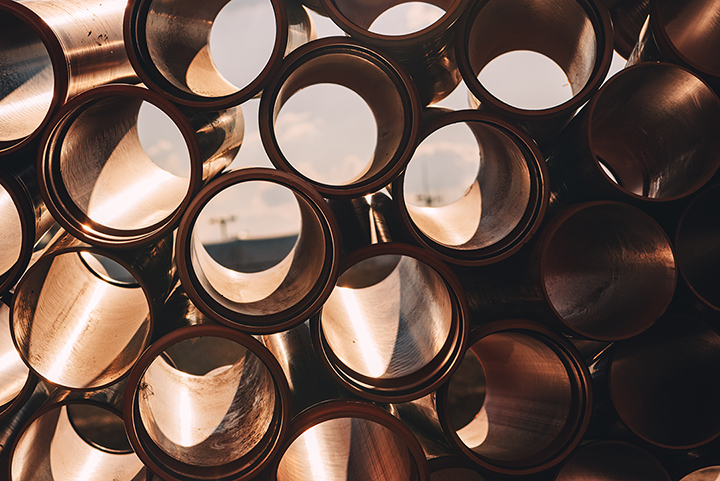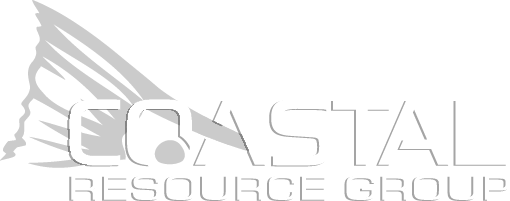When working with pipes in industrial settings, understanding pipe sizes and pressure ratings is key for making sure everything works the way it should and avoiding problems like leaks or bursts. In this guide, we’ll break down important terms like psi dimensions, pipe sizing methods, and wall thickness types, and explain why these things matter. By the time you’re done reading, you’ll have a good handle on pipe sizes and pressure ratings and will be able to make smart choices for your piping needs, such as selecting the right pipe for a 1-inch 200 psi water line.
Pipe Sizing 101: NPS and DN
In the United States, pipes are sized using the NPS or “Nominal Pipe Size” system. This naming system is used to talk about pipe diameter, with “NPS” followed by a number that’s close to the diameter in inches. For example, “NPS 2” means a 2-inch pipe, “NPS 4” means a 4-inch pipe, and so on. Keep in mind that the NPS system is based on the pipe’s inside diameter (ID), while the actual outside diameter (OD) is slightly larger. The difference between NPS and actual OD varies depending on the pipe size. For pipes smaller than NPS 14, the actual OD is typically larger than the NPS number.
In other parts of the world, the DN or “Diameter Nominal” standard is used for pipe sizing. This is the metric version of NPS, and while the conversion from NPS to DN is not always exact, it is generally close. For example, an NPS 1 pipe is equivalent to a DN 25 pipe, and an NPS 2 pipe is equivalent to a DN 50 pipe. The conversion factor is approximate, and the actual DN value may not always be a simple multiple of 25.
The size of the pipe affects a few important things in a piping system:
- Flow rate: Bigger pipes let more fluid move through, which means higher flow rates and better system efficiency.
- Pressure drop: Smaller pipes make it harder for fluid to flow, causing more pressure loss over distance. This can hurt system performance and make it use more energy.
- Installation: Bigger pipes are heavier and harder to work with, so they need more resources and require more effort to install and maintain.
When picking a pipe size for a specific job, you need to find a balance between these factors. The size you choose should be able to handle the flow rate and pressure you need without being too big and too difficult to install. This means thinking carefully about what the system needs and what limits it has. For example, when designing a 1 inch 200 psi water line, you’ll need to consider the psi dimensions to ensure the pipe can handle the pressure safely.
Pressure Ratings: Keeping Things Safe
Pressure ratings tell you the highest pressure a pipe can handle safely without breaking, measured in PSI or “pounds per square inch.” Higher PSI ratings need stronger, tougher pipes to make sure the system stays in one piece and doesn’t leak or burst. Understanding psi dimensions is criticall when planning any piping project, like installing a 1-inch 200 psi water line.
A few things affect a pipe’s pressure rating:
- Pipe material: Some materials, like stainless steel, are stronger and more durable than others, so they can handle higher pressure ratings.
- Temperature: Pipes can’t handle as much pressure when they’re hot, because heat can change how the material behaves.
- Wall thickness: Thicker walls let pipes handle higher pressures by giving them more structural support and making them harder to deform.
Pipe Schedules: Wall Thickness Standards
Pipe schedules are used to sort and standardize wall thicknesses. They’re shown as a number, like “Schedule 40” or “Sch 80”, but these numbers don’t have any units with them and don’t mean a measurement in inches or anything else. Instead, they’re just a standard way of labeling wall thicknesses for different pipe sizes.
Common pipe schedules are:
- Sch 10: This is a thin-walled pipe, usually used for low-pressure jobs where weight and cost are the main concerns.
- Sch 40: Called the “standard” wall thickness, Sch 40 is used for lots of different jobs with medium pressures. It’s a good mix of strength and cost.
- Sch 80: Known as “extra strong”, Sch 80 has thicker walls than Sch 40 and is used for higher-pressure jobs or when you need extra toughness.
- Sch 160: This is the thickest standard wall, called “double extra strong”. It’s used for the highest-pressure jobs or in extreme conditions where you need the most strength and reliability.
Remember that the actual wall thickness for a given schedule changes based on the pipe size. For example, a Sch 40 wall is thicker on a 4-inch pipe than on a 2-inch pipe. Usually, higher schedules can handle higher pressures but are also heavier and cost more. So you have to think carefully about what the system needs and how much you can spend.
Midstream and Downstream Applications
Pipe size and pressure rating selection are critical in both midstream and downstream applications in the oil and gas industry. Midstream refers to the transportation, storage, and wholesale marketing of crude or refined petroleum products, while downstream includes oil refineries, petrochemical plants, and distribution of products to end users.
Midstream Applications
In midstream applications, pipelines transport oil, natural gas, and other products over long distances. These pipelines must be properly sized and rated to handle the high pressures and flow rates involved. For example, a natural gas pipeline might use NPS 24 or larger pipes with high-pressure ratings to move gas efficiently from production sites to processing plants.
| Product | Pipe Size (NPS) | Pressure Rating (PSI) | Weather Considerations |
| Natural Gas | 24 – 48 | 500 – 1500 | Extreme cold can cause contraction and increased brittleness. |
| Crude Oil | 12 – 48 | 200 – 1000 | High temperatures can reduce viscosity and increase flow rates. |
| Refined Products | 8 – 24 | 100 – 500 | Freezing temperatures can cause blockages and damage to pipes. |
Downstream Applications
Downstream applications also rely on proper pipe sizing and pressure ratings. In a refinery, pipes carry various fluids at different temperatures and pressures throughout the process. These pipes must be able to handle the specific conditions they’ll be exposed to, such as high-temperature steam or corrosive chemicals. Selecting the right pipe size and material is essential for safe and efficient operation.
| Industry | Application | Pipe Size (NPS) | Pressure Rating (PSI) | Material Considerations |
| Oil Refining | Crude Oil Distillation | 6 – 24 | 150 – 500 | High-temperature alloys for heat resistance. |
| Petrochemical | Ethylene Production | 1 – 12 | 500 – 3000 | Stainless steel for corrosion resistance. |
| Fertilizer Production | Ammonia Synthesis | 2 – 8 | 1000 – 5000 | High-pressure steel alloys for extreme conditions. |
These tables demonstrate how pipe size and pressure rating requirements can vary significantly based on the specific application, product being transported, weather conditions, and material considerations. It’s essential to work with experienced professionals who can help select the appropriate pipes and components for each unique situation to ensure safe, efficient, and reliable operation.
Pipe Size and Pressure Rating Selection Table
To help make pipe size and pressure rating selection easier, here’s a table showing some common applications and the pipe sizes and schedules typically used:
| Application | Fluid | Temperature | Pressure | Pipe Size (NPS) | Pipe Schedule |
| Water distribution | Water | Ambient | Low | 1/2 – 2 | Sch 40 |
| Fire sprinkler systems | Water | Ambient | Medium | 1 – 2 | Sch 40 |
| Hydraulic systems | Oil | Ambient | High | 1/4 – 1 | Sch 80 |
| Steam lines | Steam | High | Medium | 1/2 – 4 | Sch 40, Sch 80 |
| Natural gas pipelines | Natural gas | Ambient | High | 24 – 48 | Varies |
| Chemical processing | Various chemicals | Varies | Varies | 1/2 – 12 | Sch 40, Sch 80 |
| Oil refineries | Crude oil, refined products | Varies | Varies | 1/2 – 48 | Varies |
Note that these are just general guidelines, and the specific pipe size and schedule needed will depend on the exact conditions and requirements of each application. It’s always best to consult with a qualified engineer or supplier to determine the optimal pipe size and pressure rating for your project.
Getting Help from the Pros at Coastal Resource Group
 Coastal Resource Group provides HDPE pipes with high pressure ratings for durable, reliable industrial use.
Coastal Resource Group provides HDPE pipes with high pressure ratings for durable, reliable industrial use.Picking the right pipes for a job can be tricky, so it’s always a good idea to work with a supplier who knows their stuff. That’s where Coastal Resource Group comes in. Our team of experts can help you figure out exactly what you need for any size project and will be there to guide and support you every step of the way.
As a top industrial supply specialist, Coastal Resource Group has a huge selection of pipes, valves, fittings, hoses, and all the other parts you need. We get our products from trusted manufacturers and carefully choose them to meet the highest quality standards. With locations in Dickinson and Seguin, Texas, we’re in a great spot to serve the Gulf Coast and beyond. We make sure to deliver fast and give our customers the best service around.
If you need help with pipe sizes, pressure ratings, or anything else related to pipes, like selecting components for a 1-inch 200 psi water line based on psi dimensions, Coastal Resource Group is just a phone call away at (281) 549-4132. Our friendly staff is ready to give expert advice, answer your questions, and help you find the perfect solution for your needs. When you partner with Coastal Resource Group, you can trust that you’re getting the right parts to keep things running smoothly. We’re committed to quality, reliability, and making our customers happy.


